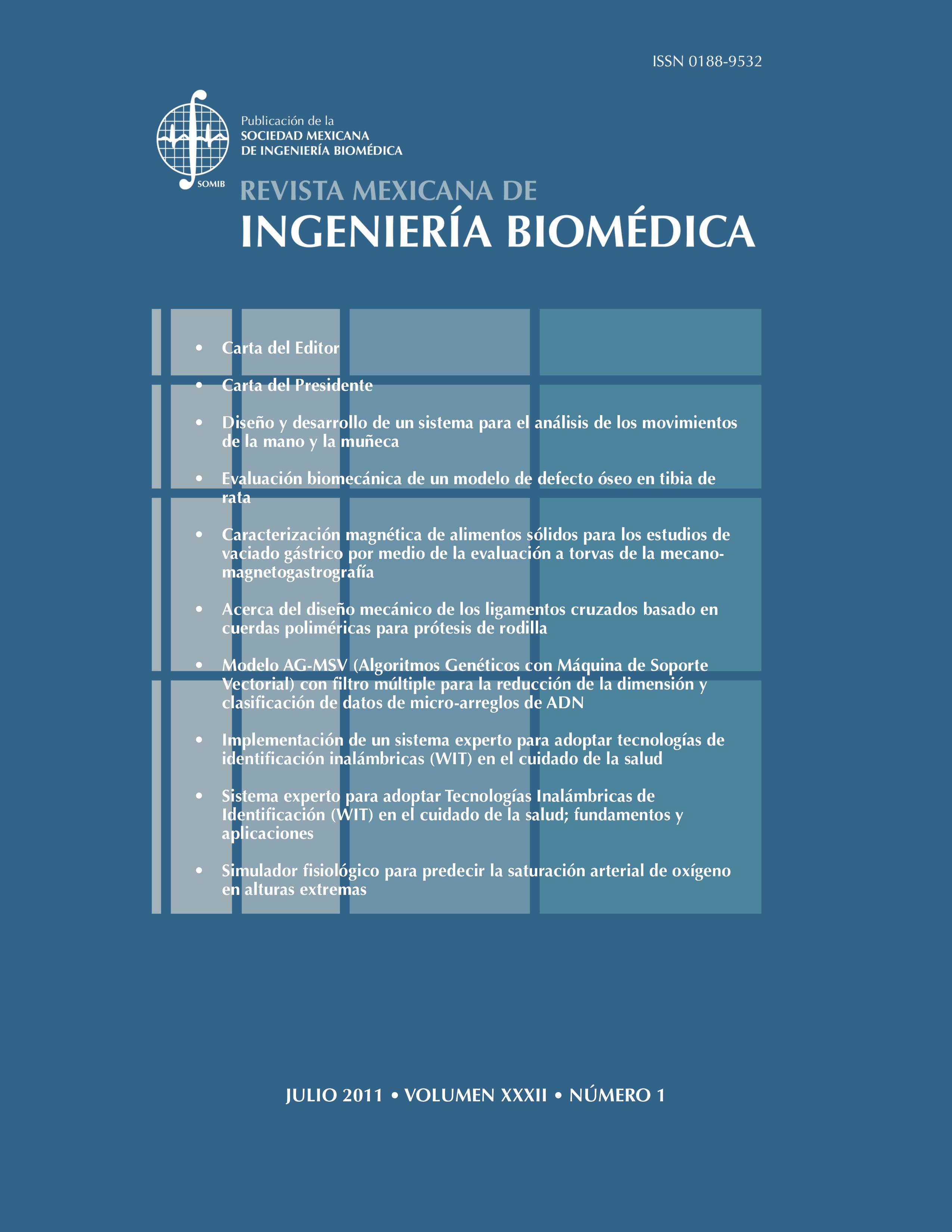On the mechanical design of cruciate ligaments based on polymeric ropes of knee prothesis
Abstract
The cruciate ligaments are the ligamentous structure of the knee, which function as a joint stabilizer. It is known that the anterior cruciate ligaments are the most commonly injured ligaments of the knee, and are typically removed during total knee replacement. Also, that exists a limitation of existing grafts which has have motivated the investigation of tissue-engineered anterior cruciate ligament grafts. These investigations include different types of scaffold design. Although these designs have exhibited comparable behavior as natural anterior cruciate ligaments, still there is no commercially available synthetic graft that could achieve fully the mechanical properties of natural ones. In this paper it is attempted to accomplish this goal by introducing the design of cruciate ligaments based on the similarity between the mechanical behavior of the cruciate ligaments and the mechanical behavior of bridge cables, which allows one to apply the theory of the latter to propose an arrangement of braided threads of polyethylene and polypropylene. Mechanical tests on the proposed model show that the mechanical behavior of the designed cables is similar to the cruciate ligaments. The observed differences in stress-strain curves showed an average error of 10.08% for the anterior cruciate ligaments ACL and 9.99% for the posterior cruciate ligaments PCL.
Downloads
Downloads
Published
How to Cite
Issue
Section
License
Upon acceptance of an article in the RMIB, corresponding authors will be asked to fulfill and sign the copyright and the journal publishing agreement, which will allow the RMIB authorization to publish this document in any media without limitations and without any cost. Authors may reuse parts of the paper in other documents and reproduce part or all of it for their personal use as long as a bibliographic reference is made to the RMIB. However written permission of the Publisher is required for resale or distribution outside the corresponding author institution and for all other derivative works, including compilations and translations.




